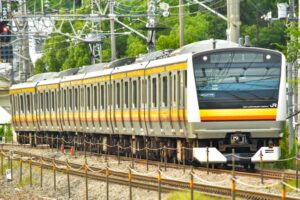
JR East is implementing several initiatives to improve safety and transport stability as it plans to introduce one-man operations on key routes in the Tokyo metropolitan area.
One-Man Operation Plan
- Spring 2025:
- Joban Line (Local Service) between Ayase and Toride stations
- Nambu Line between Kawasaki and Tachikawa stations
- Spring 2026:
- Yokohama-Negishi Line between Hachioji and Ofuna stations (8-car trains, with only E233 series 8-car trains operating one-man service between Higashi-Kanagawa and Ofuna stations)
- By 2030:
- Yamanote Line, Keihin-Tohoku/Negishi Line, Chuo/Sobu Line (Local Service), Saikyo/Kawagoe Line

Safety Improvement Initiatives
- Installation of passenger boarding monitors at the driver’s seat to help the driver confirm the boarding status of passengers and ensure safety during departure.
- Introduction of a system allowing direct communication from the transportation control center to the train interior and with passengers, a first for JR East, to address emergencies.
- Training programs for crew members to reinforce safety and passenger reassurance during one-man operations.
- Promotion of platform door installation, in cooperation with relevant parties, to further enhance safety.
Transport Stability Initiatives
- Introduction of Automatic Train Operation (ATO) and Automatic Train Stop Control (ATSC) to reduce the burden on drivers and improve transport stability.
Technological Developments for Enhanced Safety
- Real-time video monitoring: A feature that allows the transportation control center to monitor the train's interior in real time.
- Obstacle detection system: A system using cameras mounted on trains to detect obstacles on the tracks, which will be introduced early to strengthen emergency response capabilities.